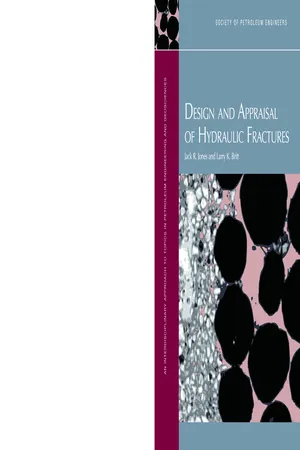
- 153 pages
- English
- PDF
- Available on iOS & Android
Design and Appraisal of Hydraulic Fractures
About this book
Using an interdisciplinary approach, Design and Appraisal of Hydraulic Fracturesoffers a basic yet comprehensive introduction to the completion and reservoir engineering aspects of hydraulic fracture stimulation. The book is divided into three sections. Section 1 covers the design and placement of a hydraulic fracture stimulation; topics include the basics of the hydraulic fracturing process, stress issues, fracture geometry, controls on generated length and width, fluid and proppant selection, quality control, and quality assurance. Section 2 introduces the use of dynamic data to characterize the in-place hydraulic fracture, outlining the methods of pressure-transient analysis for both pressure-drawdown and pressure-buildup tests. The discussion includes effective wellbore radius, effective fracture half-length, equivalent skin, and their relationships; simulated and field examples illustrate the basic analysis procedure and many common pitfalls. The final section covers the prediction of long-term rate performance and recoverable volumes. Three approaches are discussed: rate-decline type curves, analytical and semianalytical methods, and numerical simulation. Essential elements are given for each and illustrated with field examples.
Frequently asked questions
- Essential is ideal for learners and professionals who enjoy exploring a wide range of subjects. Access the Essential Library with 800,000+ trusted titles and best-sellers across business, personal growth, and the humanities. Includes unlimited reading time and Standard Read Aloud voice.
- Complete: Perfect for advanced learners and researchers needing full, unrestricted access. Unlock 1.4M+ books across hundreds of subjects, including academic and specialized titles. The Complete Plan also includes advanced features like Premium Read Aloud and Research Assistant.
Please note we cannot support devices running on iOS 13 and Android 7 or earlier. Learn more about using the app.
Information
Table of contents
- 9781555631437.pdf
- introduction.pdf
- acknowledgments.pdf
- chapter01.pdf
- chapter02.pdf
- chapter03.pdf
- nomenclature.pdf
- references.pdf
- author_index.pdf
- subject_index.pdf